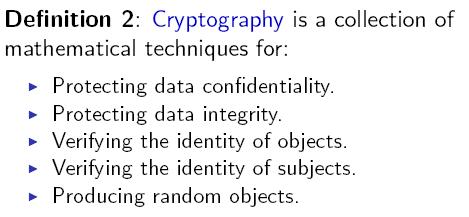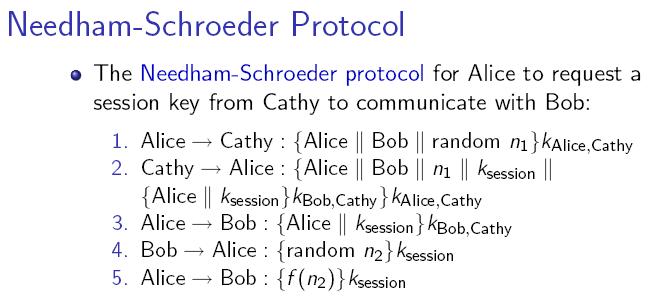Random Number Generators and Information Security
From Computing and Software Wiki
| Line 33: | Line 33: | ||
== See Also == | == See Also == | ||
== External Links == | == External Links == | ||
| - | == | + | == Notes == |
<references /> | <references /> | ||
--[[User:Caoff|Caoff]] 19:00, 1 December 2007 (EST) | --[[User:Caoff|Caoff]] 19:00, 1 December 2007 (EST) | ||
Revision as of 06:52, 2 December 2007
A random number generator (often abbreviated as RNG) is a computational or physical device designed to generate a sequence of numbers or symbols that lack any pattern, i.e. appear random. Computer-based systems for random number generation are widely used, but often fall short of this goal, though they may meet some statistical tests for randomness intended to ensure that they do not have any easily discernible patterns. Methods for generating random results have existed since ancient times, including dice, coin flipping, the shuffling of playing cards, the use of yarrow stalks in the I Ching, and many other techniques.
The many applications of randomness have led to many different methods for generating random data. These methods may vary as to how unpredictable or statistically random they are, and how quickly they can generate random numbers.
Before the advent of computational random number generators, generating large amount of sufficiently random numbers (important in statistics) required a lot of work. Results would sometimes be collected and distributed as random number tables. <ref name="wikiRNG">Wikipedia: Random Number Generation</ref>
Contents |
Relevance to Information Security
Vulnerability
Two Kinds of Randomness
True Randomness
Physical Methods
The earliest methods for generating random numbers - dice, coin flipping, roulette wheels are still used today, mainly in games and gambling as they tend to be too slow for applications in statistics and cryptography.
Some physical phenomena, such as thermal noise in zener diodes appear to be truly random and can be used as the basis for hardware random number generators. However, many mechanical phenomena feature asymmetries and systematic biases that make their outcomes not truly random. The many successful attempts to exploit such phenomena by gamblers, especially in roulette and blackjack are testimony to these effects.
There are several imaginative sources of random numbers online. A common technique is hashing a frame of a video stream from an unpredictable source. Most notable perhaps was Lavarand which used images of a number of lava lamps. Lithium Technologies uses a camera pointed at the sky on a windy and cloudy day. Random.org has a more obvious approach of listening to atmospheric noise. Details about how they turn their input into random numbers can be found on their respective sites.
Completely randomized design falls within the category of true random number generation. The generation of true random numbers outside the computer environment is based on the theory of entropy. Sources of entropy include nuclear decay and atmospheric conditions. HotBits uses radioactive decay, while Random.org uses radio noise to generate randomness.<ref name="wikiRNG"/>
Examples
Pros and Cons
Pseudo-Randomness
Computational Methods
Examples
Pros and Cons
Verdict
Conclusion
See Also
External Links
Notes
<references />
--Caoff 19:00, 1 December 2007 (EST)


